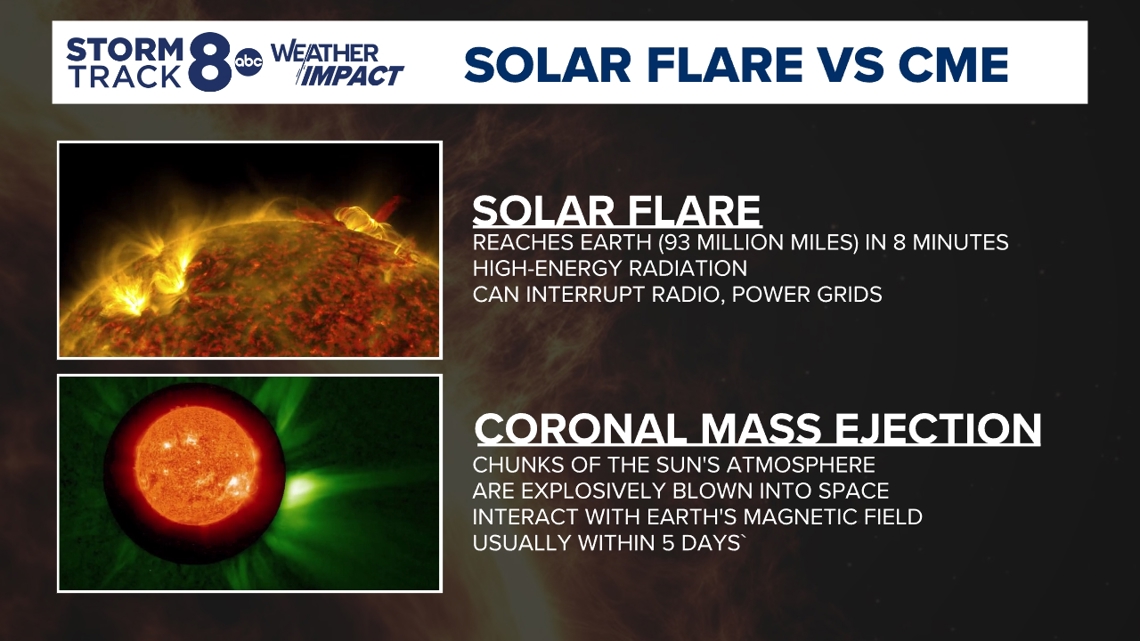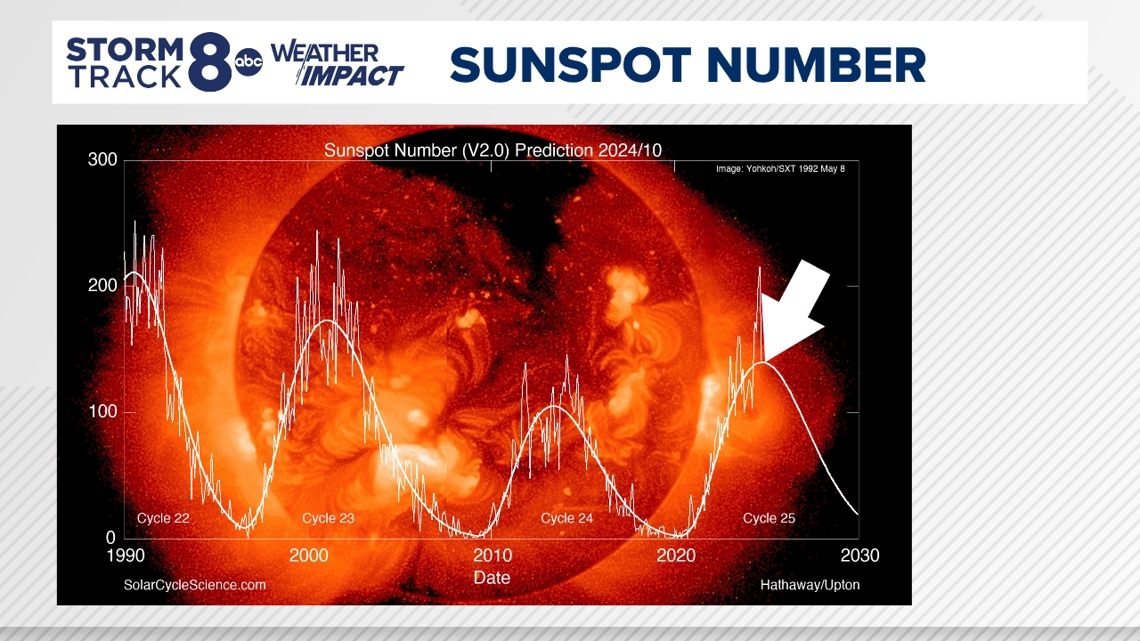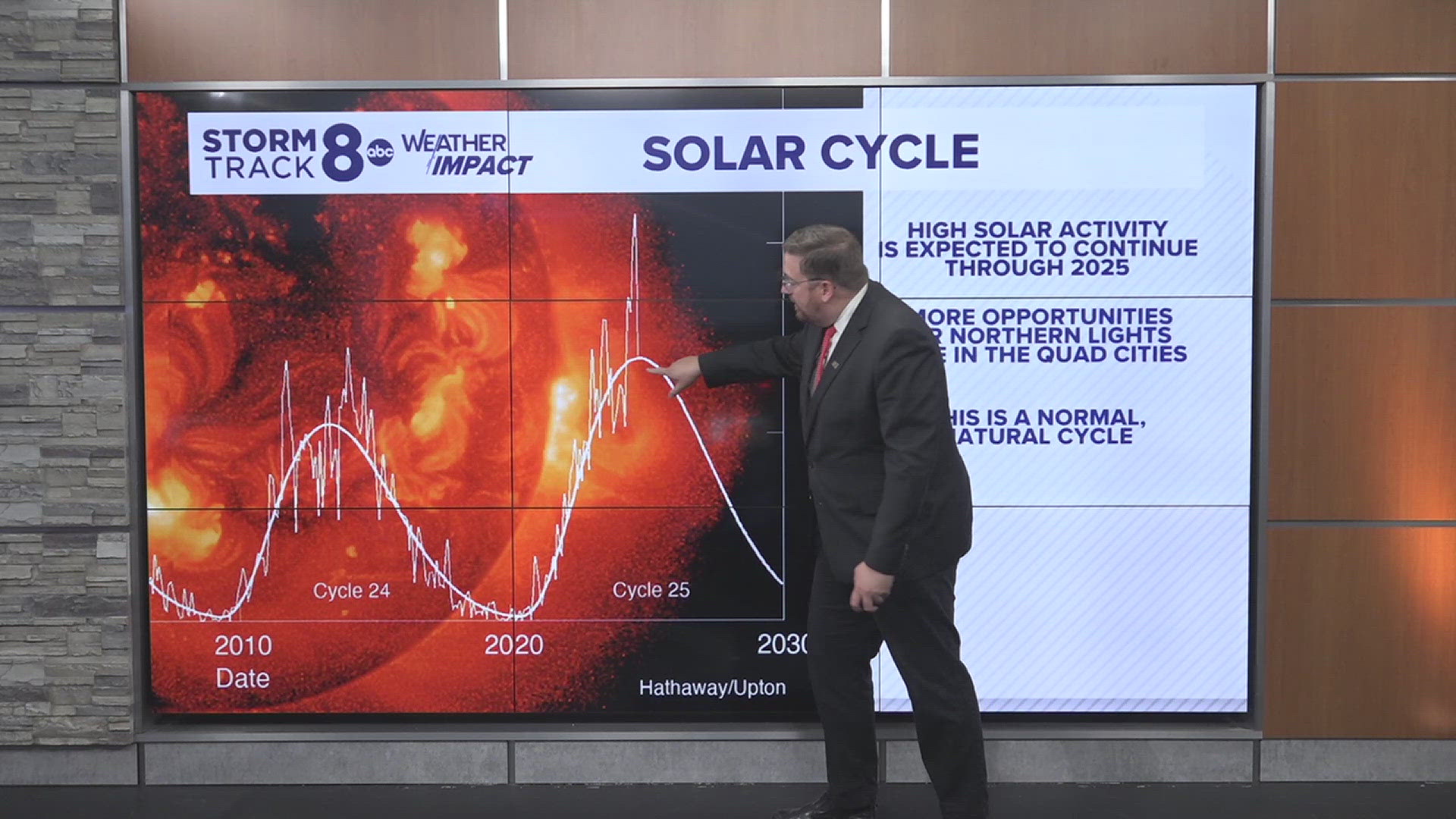MOLINE, Ill. — The northern lights have now made a dramatic appearance in the Quad Cities region twice this year — first with a severe geomagnetic storm in May and most recently in early October. This last geomagnetic storm made the lights visible as far south as the Bahamas!
If you missed either of these shows, no worries. The northern lights are likely going to make another appearance in the next several months. What is the Sun doing that is making these more visible all across the globe and is this something to be concerned about? Let's dig in!
An intro to the sun and its behavior
The sun is projected to have a lifetime of roughly ten billion years. Currently, the sun is about halfway through that lifetime at 4.6 billion years old. This star is the most important source of energy for life on Earth. It contains hot plasma that is heated by nuclear fusion reactions at its core. Active regions of the sun that contain very strong magnetic fields, much stronger than Earth's magnetic field, are black and called sunspots.


Each sunspot group has a different polarity, or electrical charge depending on what hemisphere they exist in. Sunspots in the northern hemisphere of the sun will have the opposite charge of sunspots in the southern hemisphere. The behavior of these two hemispheres is one of the things that led astronomers to discover that the number of sunspots was pattern-driven, with an average cycle of 11 years.
Most recently, strong solar flares have interacted with our upper atmosphere to create a brilliant display in our night sky. This won't be the last of these either!
Why these lights are appearing more often right now
It's been known for centuries that the sun goes through various cycles. We are currently in Cycle 25, which began in 2020 and will continue through 2031. In each of these cycles, the sun emits solar flares and coronal mass ejections of varying frequency and strength. Using what we've learned from hundreds of years of studying our brightest star, we can predict when the maximum number of sunspots will likely appear.


As of October 2024, we are at what is expected to be the maximum number of sunspots for this cycle. Notice however that the number of actual observed sunspots has exceeded the current forecast based on historical averages, marking an exceptionally active period for the sun recently.
Sunspot activity will continue to remain high through the remainder of this year and likely most of 2025. So, don't worry if you've missed out on the last two displays. There will likely be more in the weeks and months ahead!
Strong solar storms can still render some services useless
With the last two solar storms, the biggest impact seems to be on GPS equipment. WQAD News 8's Haley Bickelhaupt said her parents have been experiencing satellite GPS issues with their John Deere harvesting equipment during these stronger storms. These severe storms can also disrupt radio communications as well!
The impact of these geomagnetic storms is extremely hard to predict more than a day or two in advance. So, the next time you hear there is the possibility of seeing northern lights, you have to act fast!
If you are curious about what creates the colors within the northern lights, check out the related stories below.

